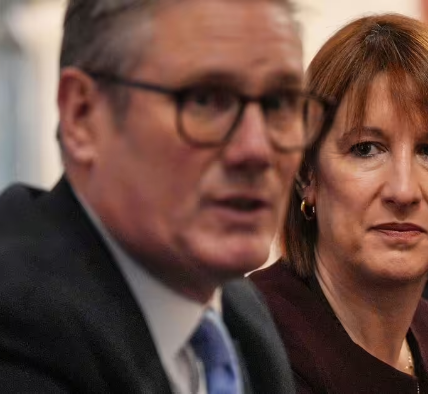UK unemployment rose to 4.3% in the three months to September, higher than expected and up from 4% in the three months to August.
The rate of UK unemployment rose to 4.3% in the three months to September, up from 4% in the three months to August, the Office for National Statistics (ONS) has said.
UK average regular earnings growth fell to 4.8% in the three months to September and was 2.7% higher after taking Consumer Prices Index inflation into account, according to the ONS.
Liberal Democrat Treasury spokesperson Daisy Cooper MP said: “Any rise in unemployment is concerning and many will be worried about the impact of the upcoming National Insurance hike on British jobs.
“Small businesses have been clobbered by years of Conservative economic vandalism and the Government’s jobs tax could now make it even harder to hire new staff and give out pay rises. Jobs and salaries could be in for yet another hit and that’s just not fair.”
Ms Cooper added that the new government should be supporting Britain’s small businesses, not placing more financial pressures on them. She urged ministers to change course, starting by exempting GPs and social care providers from the National Insurance hike.

Britain’s unemployment rate has risen to 4.3% (Image: Getty)

Wage growth has fallen to its lowest level in more than two years (Image: Getty)
Chancellor Rachel Reeves announced a £25.7billion change to employers’ National Insurance contributions (NICs) in last month’s Budget. It will increase the rate of the tax and the threshold at which firms must pay.
In its latest jobs report issued on Tuesday (November 12), the Office for National Statistics (ONS) said average regular earnings growth eased back to 4.8% in the three months to September, down from 4.9% in the previous three months. This marked the lowest level since the three months to June 2022.
Earnings growth continues to outstrip inflation, however, as pay rose by 2.7% in the three months to September after Consumer Prices Index (CPI) inflation is taken into account.
Britain’s rate of unemployment was the highest level since the three months to May, although the ONS said the estimate should be treated with caution given ongoing low response rates to its jobs survey.
Workers on payrolls also fell, down by 5,000 between September and October to 30.4 million, according to the figures.
Liz McKeown, ONS director of economic statistics, said: “Growth in pay excluding bonuses eased again this month to its lowest rate in over two years.

Average regular earnings growth eased back to 4.8% in the three months to September (Image: Getty)
“The number of people on payrolls fell slightly in September and while it remains up on the year, annual growth continues to slow.
“The labour force survey estimates show a different picture, however, we continue to advise caution when interpreting short-term changes in these estimates, as the improvements to data collection introduced at the beginning of the year are still feeding through.
“Job vacancies have fallen again, as they have been doing for more than two years now.”
Petra Tagg, Director of Manpower UK, said employers and workers across the UK are holding their nerve when it comes to hiring as they assess the impact of the Government’s Employment Rights Bill and recent Budget.
She added: “We’re seeing this paralysis of hiring and moving between roles as another signal of a hiring recession.”
Manpower UK data suggests one in four employees believe they are going to get fired in the next six months, coming at a time when British businesses get ready for increases to employer National Insurance contributions (NICs) from April.
Ms Tagg said: “Although these increases affect employers in every sector and for every seniority level, we’re anticipating the hardest hit will be those whose workforce is made up of predominantly lower wage jobs.”
She added that for some lower paid roles Manpower UK estimates employers face a 33% increase on their NICs which is a cost they will have to find somewhere to avoid damaging their bottom line.
Susannah Streeter, Head of Money and Markets at Hargreaves Lansdown, said the super-tight labour market has loosened up as employers hire fewer staff than financial markets expected and unemployment rises.
She added: “Vacancies have fallen across the economy and although they’re not back at pre-pandemic levels, it’s clear companies have been more cautious with recruitment.

Liz Kendall says more needs to be done to improve living standards (Image: Getty)
“Worrisome wage growth has again retreated a little, although not by quite as much as expected, but it still adds to a picture of increasing wariness among employers.”
Ms Streeter said the chances of the Bank of England cutting rates next month remain low but have crept up slightly given the weaker labour market picture.
Work and Pensions Secretary Liz Kendall, responding to the ONS figures, said 2.8 million people are locked out of work due to poor health, adding: “This is bad for people, bad for businesses and it’s holding our economy back.”
Ms Kendall said the Government’s Get Britain Working plan will bring forward the biggest reforms to employment support in a generation, backed by £240million of investment.
She added: “And while it’s encouraging to see real pay growth this month, more needs to be done to improve living standards too.
“So, from April next year over three million of the lowest paid workers will benefit from our increase to the National Living Wage, delivering a £1,400 a year pay rise for a full-time worker.”


